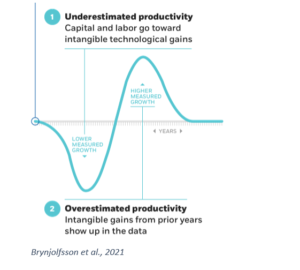Despite Widespread Adoption, AI Yields No Measurable Organizational Productivity Impact, Research Indicates

In the burgeoning 'AI age,' a persistent economic enigma challenges expectations: the disconnect between widespread Artificial Intelligence adoption and its measurable impact on productivity statistics. A recent social media post by user 'trevor (taylor’s version)' succinctly captured this sentiment, stating, > "you can see the ai age everywhere except in the productivity statistics that's because economic value is not just about smartness rl can turn smart models into useful products, yet applying rl to real tasks isn't easy i tried and here's what i found!" This highlights a growing concern among economists and businesses regarding translating AI's advanced capabilities into tangible economic value.
This phenomenon, dubbed the 'AI productivity paradox,' echoes the 'Solow Paradox' of the 1980s, where significant IT investments did not immediately translate into aggregate productivity gains. Despite substantial capital flowing into AI development, recent research, including a Faros AI report, indicates that while individual throughput may soar, there is often "no measurable organizational impact from AI" at the company level. This suggests micro-level benefits are not yet scaling to broader economic metrics.
A primary reason for this lag is the extensive time and systemic changes required for organizations to fully integrate a general-purpose technology like AI. Studies from MIT Sloan highlight a 'J-curve' effect, where initial AI adoption can lead to a temporary decline in performance as firms incur adjustment costs, invest in data infrastructure, and retrain staff. Older companies, with ingrained processes and legacy systems, often face greater short-term losses.
The tweet's author further points out that 'economic value is not just about smartness,' emphasizing the difficulty in turning 'smart models into useful products.' This is particularly evident in advanced AI techniques like Reinforcement Learning (RL), which, despite its potential, faces significant real-world application hurdles. Challenges include the need for vast, realistic simulation environments, precise reward function definition, and ensuring safety and interpretability in critical business operations, complicating practical deployment.
Beyond implementation complexities, the paradox is also influenced by potential mismeasurement of AI's economic contributions and an uneven distribution of benefits. A comprehensive Danish study tracking 25,000 workers revealed 'minimal impact on adopters’ economic outcomes,' with earnings and wages largely unchanged despite reported time savings. This suggests AI may enhance specific tasks for some, but its broader economic dividends are either not yet realized or concentrated within 'superstar' firms.
Nevertheless, many organizations are actively working to bridge this gap by focusing on 'augmented intelligence,' where AI tools enhance human capabilities rather than replacing them. Experts suggest successful AI integration requires a strategic shift, emphasizing workflow redesign, comprehensive training, and cultural adaptation. As with past technological revolutions, the current AI productivity paradox may represent a transitional phase, with long-term economic benefits expected to materialize as businesses learn to effectively harness and scale these transformative technologies.